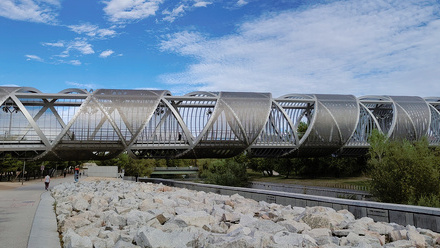Maximise and optimise
Following on from her feature on setting up a website, Tess Whitty explains how you should best optimise your website in order to be found.
Search engine optimisation (SEO) helps your website rank better in searches. In other words, it helps you come closer to the top of the first page when someone is looking online for the services you provide – which means they’re more likely to click on the link to your site as a result.
However, I don’t recommend that you spend too much time researching SEO itself. It’s more important to know what a keyword is, and to know how to deploy the keywords that apply to your copy.
Pick your keywords with care and attention
So what exactly are keywords anyway? Keywords, to put it very simply, are the terms that people will enter into a search engine when they’re looking for something. From your point of view, they are the words and phrases that you need to think about when someone is looking for a translator working in your language and/or specialism.
Keywords aren’t the whole story, and you no longer need exact keyword matches to drive your search ranking, but you should definitely still pay attention to them. The days are long gone when all you had to do was stuff your site full of keywords and be fairly confident that this would have an effect on potential traffic. However, it’s also clear that Google’s algorithms are becoming more intelligent, more human, and they reward sites that focus on providing visitors with value.
So think of words your ideal clients would use to find your services on Google and write them down. Consider these points:
- What keywords do your clients use to find your services?
- Are there similar keywords with comparable search volume (number of searches in a defined time period) and less competition?
- Can you easily work them into your text and headers?
You can also use sites like Google Keyword Planner or Ubersuggest to generate a list of words associated with your market. These services also tell you how competitive those terms are and how often they’re searched for, and they give you suggestions for other keywords to use.
Putting time and effort into your website can seem like a distraction from the core work of translation, but it’s a very good business investment
Recommendations from the SEO experts
Nowadays, search engines rely on a mixture of site authority, site content, and site popularity to determine search results. But, more importantly, they’re searching for sites that satisfy user intent. You need to build your site in a way that drives customer interest and promotes on-page activity.
Here are a few tips from SEO experts.
Site speed is important: Sites that are slow to load don’t rank so well. To make your site load faster, remove extraneous widgets and compress images. To check how quickly your website loads, you can try using the PageSpeed app.
Broken links need to go: A 404 error can leave a sour taste in a customer’s mouth. That’s why it’s important to go through your site and test its functionality. If you stumble on a broken link, remove it. You can use this broken link checker tool to help.
Content is still king: Though direct keyword use isn’t as powerful as it used to be, it continues to be a vital part of your SEO strategy. However, it’s imperative that you don’t put keywords above everything else: make sure that you focus on satisfying readers first and search engines second.
Prioritise more specific keywords: Three-quarters of search queries are between three and five words long, so tailor your content appropriately. Instead of optimising for the words ‘freelance translator’, try to build your site around terms like ‘freelance Chinese patent translator’.
Think mobile first: Design your website with phones and tablets in mind. Since Google now starts indexing on smaller screens, a responsive website is a must. Most templates are mobile-friendly these days, but make sure you double-check how the site looks on all platforms.
Improve backlinks: Backlinks, also known as inbound or incoming links, are what happens when one website links to another. They tell search engines that other sites trust and value your content, and they serve as proof of your industry clout and authority. Don’t forget a backlink from the ITI website (and if you have an ITI Directory profile, make sure it is complete and includes your own website address).
Mention your keyword within the first 100 words: Believe it or not, by using keywords towards the start of a page, your site will rank better in search engine results. (This goes for blog posts too, if you have one linked to your site.)
Dabble in video: We all know that videos are a great way to keep audiences engaged and entertained. But do you know that by using enough videos, you can improve the ranking of your page? If you enjoy video, why not create a short welcome video on your home page.
Optimise images: Images are not just eye candy or important design aspects. You can use them to drive traffic to your website. Make sure each image you use has a title and an alt tag: there is usually a form where you fill these things out when you’re inserting the image. And make sure your tagging is relevant to the image itself, so instead of having an image with the name ‘IMG23456.jpg’ on your home page, change the name to ‘certified-swedish-translations’, or something of the kind. This is particularly important because blind and partially sighted computer users often rely on this information rather than the image itself.
Verify and index your website: This step is often overlooked but can generate great results. To allow Google to know that you own your website, and that Google should index it and send you search data, you should verify your website. You do this by registering it with Google Search Console. Once your website has been verified you can ask Google to index it. And you do this again whenever you have made significant updates. This lets Google know that you have valuable information to index so that more people can find your content.
Do meta and title tags right: Your title tag is one of the first things Google looks at when categorising the individual web page. The combination of title tag and ‘snippet’ (meta description) is what your prospects are going to see in their searches. Include keywords but make titles and snippets sound natural, and focus on motivating prospects to click. For best results, keep it to 65 characters or fewer. And if all this sounds utterly beyond you, don’t worry! All website services include SEO tools that make this very easy these days. For example, in WordPress, SEO by Yoast makes it as easy as filling out a form and taking the suggested steps to go from ‘red’ (not so optimised) to ‘green’ (good to go).
These tips and strategies should help you set up and optimise a website so that you can attract clients to you online, without the need of a web designer or SEO expert. I hope you find them useful and that you can implement them for your website. Set aside a short period each week (even just 30 minutes) to do one step at a time. While this is essentially a long-term strategy, you should start seeing some results in terms of increased traffic and inquiries from clients later this year
This article first appeared in the November/December 2021 edition of the ITI Bulletin. Read Tess's earlier feature on setting up a website here.
Never miss another Bulletin article

If you would like to read more features and articles on a wide variety of subjects relating to all aspects of the translation and interpreting industry, subscribe to ITI Bulletin. Alternatively, join ITI and get a free subscription included in your membership.






